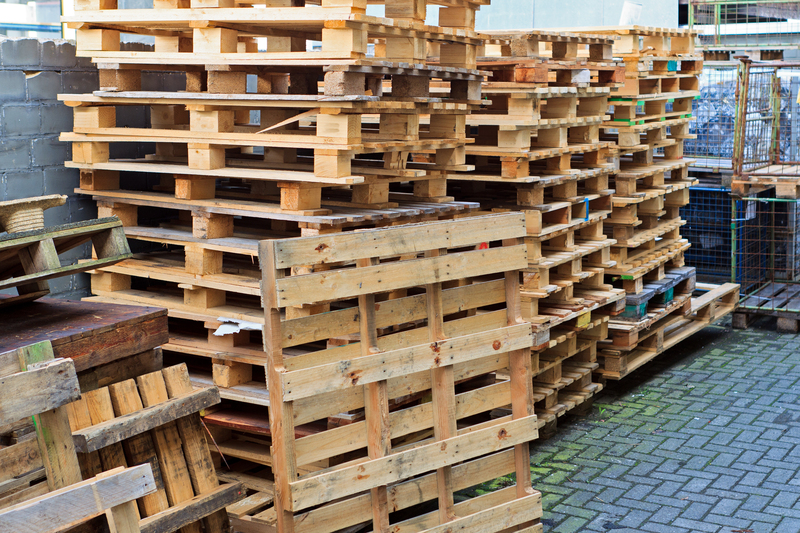Why Proper PPE Waste Disposal Matters for Global Health
The COVID-19 pandemic has drastically changed the way we perceive hygiene and infectious disease prevention. At the heart of this shift is personal protective equipment (PPE), which became a standard part of life for healthcare workers and laypersons alike. While these items have saved countless lives, they have also introduced a new and critical challenge: proper PPE waste disposal. The repercussions of neglecting appropriate disposal strategies do not stop at environmental damage--they ripple through our global health systems, threatening both current and future generations.
What is PPE and Why is it Used?
Before delving into the importance of PPE waste management for global health, it’s vital to clarify what constitutes PPE and its ubiquitous role in our lives.
- Definition: Personal Protective Equipment includes items like masks, gloves, gowns, face shields, and goggles.
- Applications: Used across healthcare, industry, research labs, public transport, and for personal protection against infectious agents.
- Pandemic Surge: The COVID-19 crisis led to a significant jump in PPE production and usage worldwide.
PPE’s Role in Disease Containment
PPE acts as a frontline defense, preventing the direct transmission of pathogens between individuals. During epidemics and pandemics, proper use of masks and gloves reduces the spread of airborne viruses and bacteria. However, this effectiveness is only half of the equation--how we dispose of used PPE is equally crucial to breaking the chain of infection.

PPE Waste: A Mounting Global Crisis
The exponential increase in the use of disposable masks and gloves has created a new environmental and public health frontier. According to reports, the world was using an estimated 129 billion face masks and 65 billion gloves each month during the peak of the pandemic. Most of these are made from plastic-based materials that do not easily biodegrade.
The Scale of the Problem
- Land and Marine Pollution: PPE litter is accumulating in landfills, rivers, and oceans, harming terrestrial and marine wildlife.
- Microplastic Generation: These items break down into microplastics, entering food chains and potentially human bodies.
- Pathogen Reservoirs: Improper disposal of used PPE serves as a reservoir for viruses, bacteria, and other infectious agents, increasing the risk of secondary transmission.
Why Proper PPE Waste Disposal is Vital for Global Health
Managing personal protective equipment waste isn’t just an environmental concern; it is fundamentally an issue of global public health. Here’s why:
1. Prevents Secondary Transmission of Infections
Discarded PPE, especially in healthcare or public settings, can still harbor infectious agents. Virus-laden gloves and masks can infect waste handlers, scavengers, and communities living near open dump sites. Proper segregation, treatment, and disposal are critical steps to reset the infection cycle and protect vulnerable populations.
2. Reduces Environmental Toxins
PPE waste, mainly composed of synthetic fibers and plastics, does not degrade easily. When burned improperly or left to decay, it releases toxic substances such as dioxins, furans, and microplastics. These toxins pollute our air, water, and soil, with direct and indirect health consequences for humans and animals alike.
3. Mitigates Antimicrobial Resistance (AMR)
Many PPE items disposed of from hospitals carry trace amounts of antibiotics or antimicrobial agents. When these items are discarded into the environment, they can contribute to the development of antimicrobial resistance (AMR)--a pressing threat to global health systems. Proper treatment and disposal protocols prevent environmental contamination with these substances.
How Improper PPE Waste Disposal Harms
For those who might underestimate the impact of improper PPE waste disposal, let’s explore the many ways it can harm both human populations and ecosystems around the world.
- Soil Contamination: Discarded PPE leaches chemicals into the ground, affecting agriculture and potable water sources.
- Waterway Blocking: Masks and gloves clog drainage systems, causing urban flooding and increasing waterborne disease risks.
- Wildlife Entanglement and Ingestion: Birds, fish, and other animals can get entangled in, or ingest, PPE waste, leading to injury or death--further disrupting already fragile ecosystems.
- Community Health Risks: Poorly disposed PPE in public spaces risks community exposure to pathogens, especially in low-resource settings where manual waste picking is common.
Best Practices for Effective PPE Waste Management
Given the multiply compounding risks of improper PPE disposal, adopting and enforcing robust PPE waste disposal protocols is crucial. Here’s what effective systems must include:
1. Segregation at the Source
PPE waste should be separated from general waste at the point of disposal. This involves using color-coded bins and containers specifically labeled for infectious PPE items.
2. Safe Handling and Collection
Waste handlers should use adequate protective gear and be trained in safe collection practices. This reduces the risk of exposure in both healthcare and occupational settings.
3. Treatment Before Disposal
Methods such as autoclaving, microwaving, incineration (under controlled conditions), or chemical disinfection neutralize infectious agents before PPE waste enters landfills or recycling facilities.
4. Responsible Final Disposal
- Secure Landfilling: Only after proper decontamination should PPE waste be sent to authorized landfills.
- Recycling Innovations: Emerging technologies are attempting to recycle single-use PPE into new products, reducing the environmental footprint.
Global Examples and Success Stories
Several countries have risen to the challenge of managing PPE waste since the onset of the COVID-19 pandemic. Their experiences offer important lessons for the global community:
- Singapore: Implemented a nationwide special bin system in public areas for mask and glove disposal, coupled with a public education campaign.
- United Kingdom: Set up temporary high-temperature incineration sites for treating COVID-related PPE.
- India: Issued national guidelines for PPE waste disposal in hospitals and urban settlements, with color-coded bag mandates and frequent collection cycles.
- Canada: Encouraged pilot projects transforming used PPE into construction material through advanced recycling techniques.
The Role of Individuals and Communities
While governments and institutions bear much responsibility, individual actions collectively shape outcomes. Here’s how everyone can contribute to proper PPE waste management:
- Don’t Litter: Always dispose of used masks and gloves in designated waste bins.
- Follow Local Disposal Protocols: Stay updated on guidelines for separating and treating household PPE waste.
- Cut Mask Straps: Snipping the ear loops before discarding can help avoid risk of animal entanglement.
- Raise Awareness: Educate friends, family, and community members about the importance of proper PPE waste disposal for the greater good of global health.

Innovations in Sustainable PPE and Waste Reduction
The need for safer PPE disposal is fostering innovations:
- Biodegradable PPE: Researchers are developing PPE made from materials that safely break down in composting environments.
- Reusable Options: Encouraging the use of washable, reusable masks and gowns where feasible.
- Recycling Programs: Partnerships between healthcare facilities and recycling companies to transform used PPE into roadways, construction bricks, and energy.
These innovations, coupled with awareness and policy enforcement, can gradually stem the tide of PPE waste and its negative impact on global health.
Conclusion: The Global Responsibility of PPE Waste Management
The challenges posed by improper PPE waste disposal are not restricted by borders or oceans. Our collective health and prosperity depend on responsible, sustainable PPE waste management strategies. By adopting best practices, supporting technological innovation, and spreading awareness, we can protect all layers of the population--from healthcare workers to indigenous communities and wildlife. In a holistic sense, proper PPE waste disposal is a cornerstone of global health security, demanding urgent attention and unified action from every sector of society.
Our future well-being relies not just on the right usage of personal protective equipment, but on how thoughtfully we discard it. Let us take up the mantle of global stewardship, safeguarding the planet and its people--one responsible action at a time.
